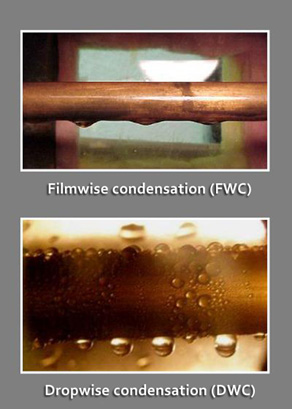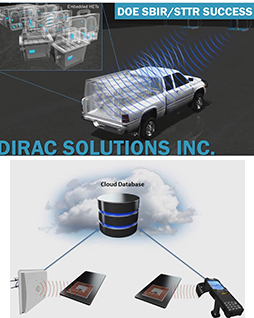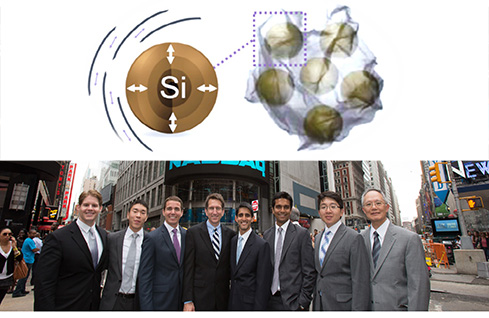NEI Corporation Technology Promotes Efficiency in Heat Exchangers
NEI’s SuperCondenser™ technology increases the energy efficiency of a power plant’s condensing steam turbine by allowing steam to condense into water more efficiently.

R&D Opportunity
In electrical utilities and in many process industries, improved heat transfer by heat exchangers represents the greatest potential for improving process energy efficiency. In FY 2008, through the SBIR program, the U.S. Department of Energy’s Office of Basic Energy Sciences funded research and development activities to improve heat exchanger efficiency—though materials of construction, improved heat transfer fluid materials—including nanostructured fluids and improved heat exchanger design. Heat exchanger costs, ease of retrofit and installation, and maintenance were considered to ensure innovative technologies were commercially viable.
Solution
Steam from a condensing turbine flows into a surface condenser, which is comprised of tens of thousands of tubes, typically made of untreated stainless steel or titanium, and packed as a bundle inside a cylinder. Cooling water flows inside the tubes, and steam condenses on the outside surface. Usually, steam condenses by a process called film-wise condensation (FWC), which leads to a film of water that acts as a heat transfer barrier. In contrast, NEI’s patent-pending SuperCondenser™ technology promotes durable drop-wise condensation (DWC), whereby a fresh metal surface is constantly exposed to the steam. The DWC is the result of a super-hydrophobic surface treatment on the tubes and is a key feature of the SuperCondenser™ technology. The key innovation in this DOE funded effort is the development of an industrially scalable liquid coating formulation that leads to a highly durable hydrophobic coating.
Impact
The SuperCondenser™ surface treatment is applicable to industrial condensers in general, including and especially surface condensers in power plants. The surface treatment is applicable to metallic surfaces, such as stainless steel and titanium, which are found in a variety of commonly used consumer products, like kitchen appliances, shower heads, and hand rails. The treatment enables a highly hydrophobic and oleophobic surface, therefore providing anti-fouling and easy to-clean properties.
NEI’s technology results in an increase in the heat transfer coefficient by as much as 20%. The increased efficiency can lead to either a reduction in the amount of fuel used for a given power level or an increase in power output for a constant fuel intake. NEI states that if all the coal and natural gas based power plants in the United States were to use this technology, it would result in an estimated annual savings of nearly $1.5B, or conversely, lead to an increased power output valued at over $1B per year.
Contact
Krista Martin - Engineering, Marketing, & Sales Support
NEI Corporation
kmartin@neicorporation.com
www.neicorporation.com
Highlight Categories
Program: SC-BES



